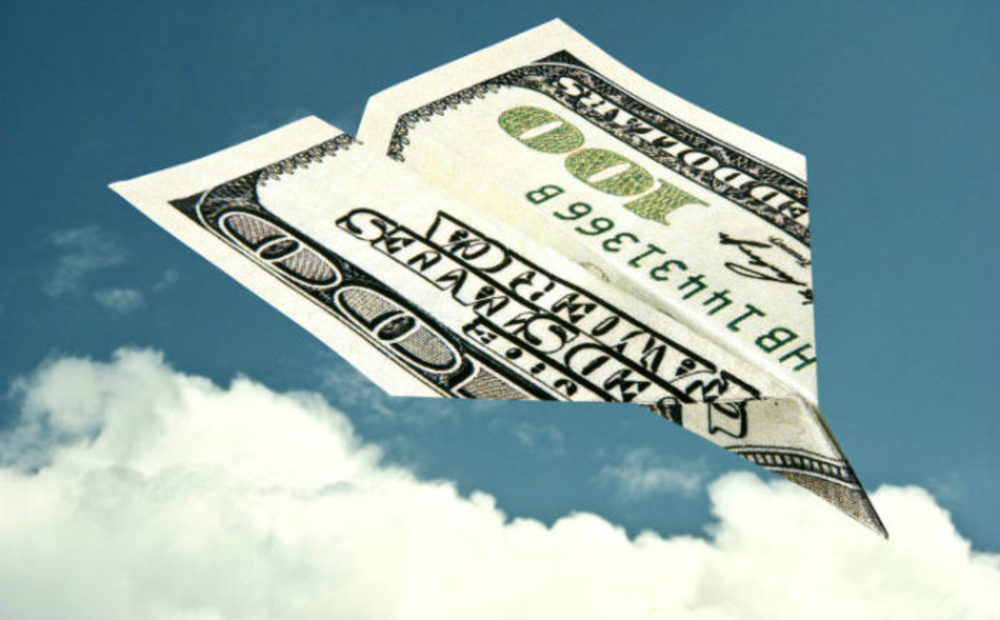Where will U.S. marketing spending grow in 2016? The more expedient question, perhaps, is which channels won’t see spending increases in 2016. Winterberry Group predicts increases in marketing spending on the majority of marketing channels—the exceptions: marketing spending on cinema, insert media, and radio will stay flat; magazine and newspaper spending will decline (by 1.9% and 6%, respectively).
Among the reasons the strategic consulting firm predicts a boom year in U.S. marketing spending are the elections and the Olympics. TV will benefit most from them, but direct mail will get a boost, as well. “Direct mail spending will be up because of the candidates using it,” Winterberry Group senior managing director Bruce Biegel said during his keynote at the Direct Marketing Club of New York’s 2016 Annual Outlook event, “but overall it will lose share of wallet as companies invest more in other channels.”
Winterberry predicts that spending in 2016 on traditional channels (i.e. measured media) overall will increase about 1%, to $127.7 billion. “The money just moves among those channels,” Biegel said. TV and outdoor will see gains—3.3% and 2.6%, respectively—while magazines and newspapers will see declines.
Spending on all data-driven channels (i.e. direct and digital) except insert media will increase, according to Winterberry Group. Overall, those channels will see 6.4% growth, to $163.7 billion.
Display, including desktop and mobile, will see the biggest growth, at 20.1%, Winterberry predicts. “You have to pay attention to display—whether it’s video or retargeting,” Biegel asserted. Search (including desktop and mobile) and email spending will also increase; 11.4% and 8.7%, respectively. “It’s hard to sustain growth rates when the numbers keep getting bigger, but we’re still seeing growth in search,” he added. Teleservices are forecast to see a gain of 2.8%. Even direct mail will increase slightly: Winterberry forecasts growth of .4%, to $47 billion. “We see volumes holding up,” Biegel said.
One area that Winterberry expects to experience significant overall growth in 2016 is digital ad spend. The consultancy forecasts 15.3% growth, to $68.6 billion. This reflects the growth in display, email, and search, as well as a projected 16.7% jump in social media management and a 6.3% increase in lead gen and affiliate services.
Biegel cited several trends to watch that could impact marketing spending this year. Programmatic, he said, will continue to take a larger share of display budgets—and will drive marketers’ spending on data, as well. Video, which exploded in 2015, is still a channel to watch in 2016. “What we’re watching in 2016 is addressable TV,” Biegel said. ‘We’ll see some continued chord cutting, but not a worrying amount. Marketers aren’t taking budget away from TV; they’re just moving those dollars around to video on TV.”
Click the infographic to open the PDF.
The spending increases in digital channels are bolstering spending on data, as well, according to Winterberry. The consultancy predicts that 2016 U.S. data spending in support of email (e.g., lists, database management/hygiene, analytics) and display (e.g., third-party data, DMPs, analytics) will increase 9.1% and 28%, respectively. Conversely, direct mail data spending (e.g., mailing lists and enhancements, database management/hygiene, analytics) is expected to decline 4.8%. Despite the drop in direct mail–related data spending, 2016 U.S. data spending in support of direct mail, email, and display will increase 1.1%, to 11.72 billion.
“The data economy,” Biegel said, “will continue to do well.”
The year in review
Aside from the projected boost the elections and Olympics are expected to bring to 2016 U.S. marketing spending, this year’s expected spending closely resembles the 2015 growth in marketing spending across most channels. “Data-driven marketing was pretty much up across the board,” Biegel said. “We saw an explosion across mobile; it’s become part of the fabric of marketing.”
According to Winterberry Group, 2015 U.S. spending on traditional channels (i.e. measured media) overall increased .1%, to $126.5 billion—buoyed by outdoor and TV, which saw growth of 2.7% and 2.4%, respectively. “We continue to see out-of-home grow,” Biegel said. “TV will continue to hold its own—people still watch TV.”
Spending in 2015 on all data-driven channels (i.e. direct and digital)—except insert media, which was flat—increased 8% overall, to $153.2 billion. Display and search (inclusive of mobile and desktop) saw double-digit increases, of 23.3% and 12.8%, respectively. “Programmatic grabbed 55% of all display across all formats and shows no signs of stopping,” Biegel asserted. “Search spending continued to grow fueled by local and social mobile opportunities.”
Email spending grew 9.5% in 2015 and teleservices inched up 2.7%. “Email volumes were up, costs per email went down, so pricing models are starting to shift as a result,” Biegel said. “Marketers’ use of email for onboarding grew, and we saw a big push to grow email databases.”
Direct mail had a perhaps surprising 2.9% gain in 2015, to $46.8 billion. “Direct mail volumes dropped,” Biegel said, “But postal exigent rate increases and catalogs fueled direct mail spending growth, with numerous companies using catalogs to drive online sales.”
Digital ad spending in 2015 jumped 19.2% overall, to $59.5 billion. Along with the increases in display, email, and search, spending on social media management jumped 20% and lead gen and affiliate services grew by 9.5%. U.S. spending on data in 2015—specifically in support of direct mail, display, and email—grew 7.3% overall, to $11.6 billion. That reflects a 4.3% increase in spending on data in support of direct mail, a 12.7% increase in support of email, and a 26.6% jump on data spending in support of display.
“Data spend will continue to grow in 2016 and beyond, with programmatic as a main driver,” Biegel said, adding that the increasing popularity of performance marketing will also spur spending on data. “The more spending, the more scrutiny, though…. The more marketers spend on data, the more they want to know the value of it.”








